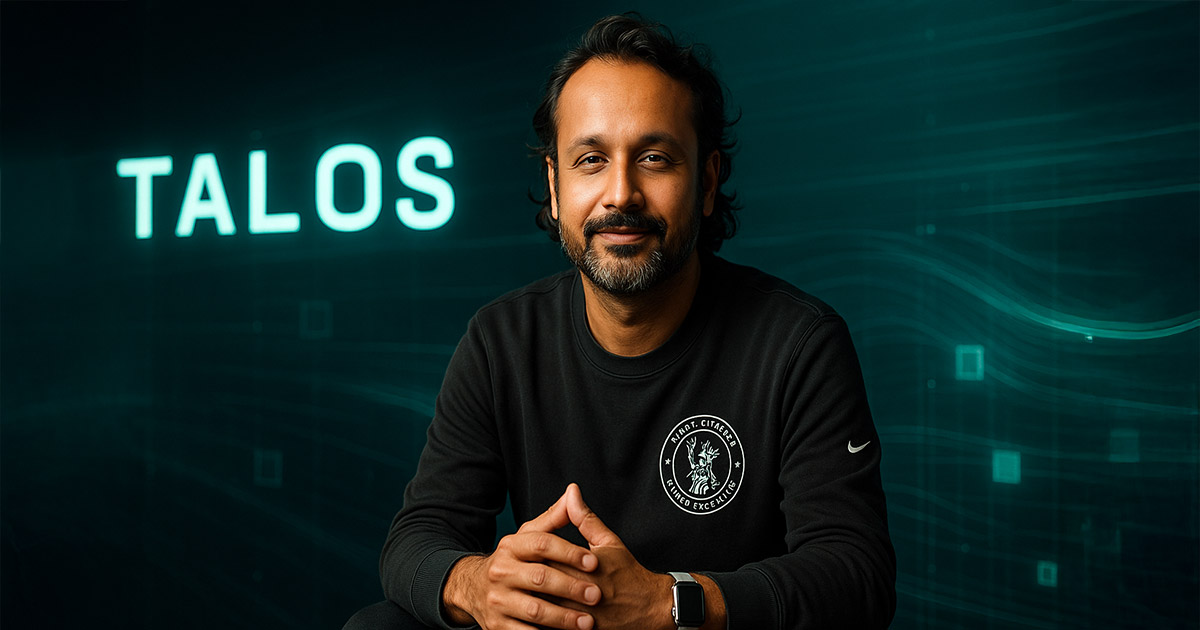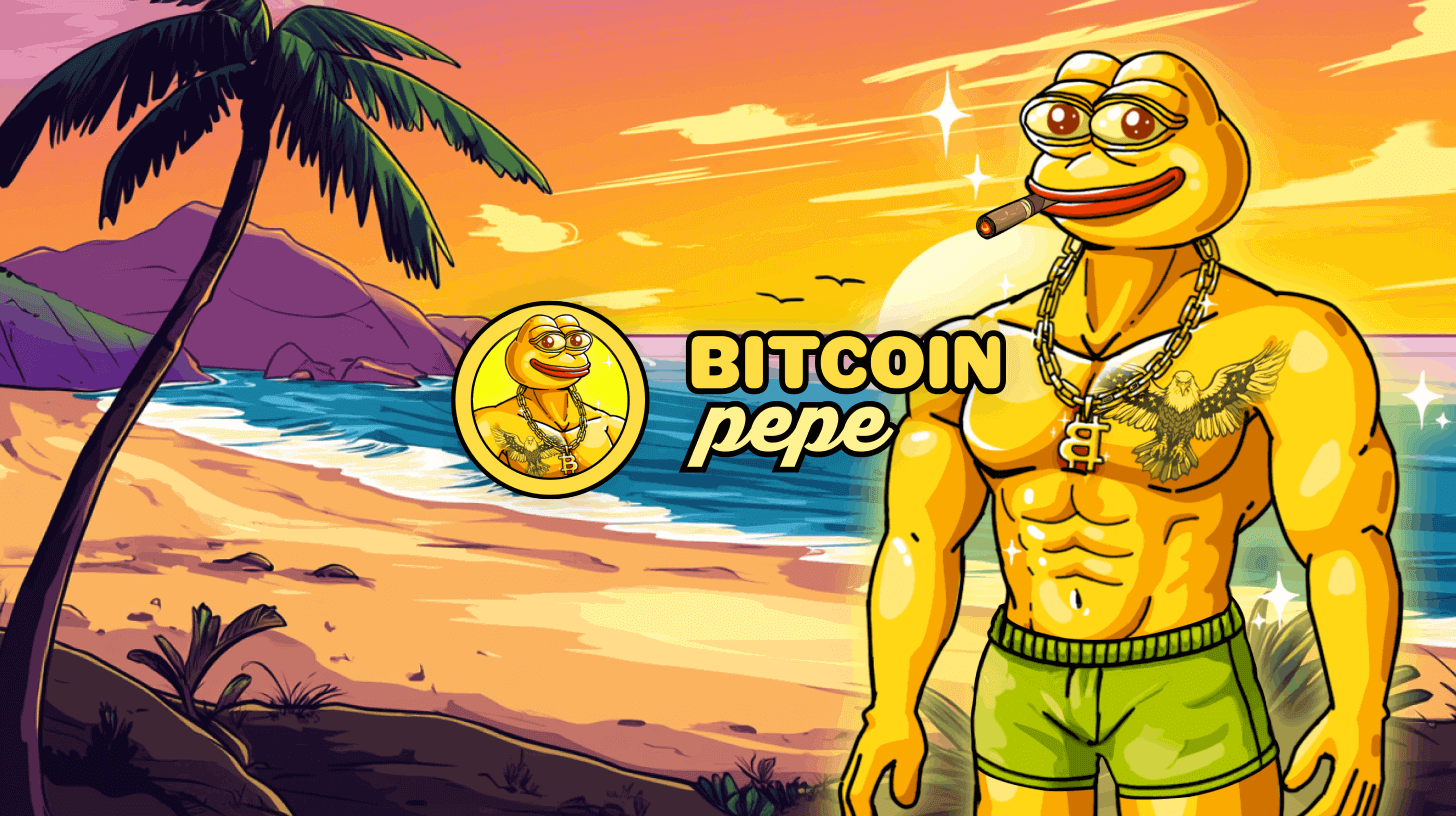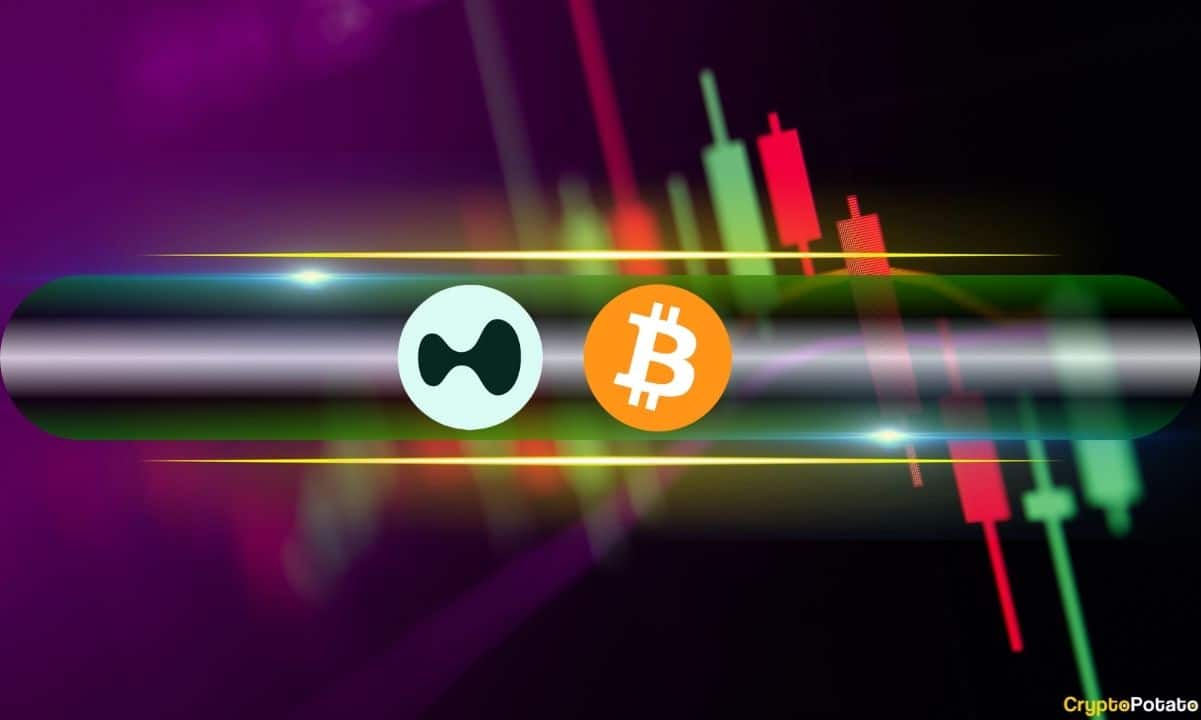Welcome to Slate Sundays, CryptoSlate’s new weekly feature showcasing in-depth interviews, expert analysis, and thought-provoking op-eds that go beyond the headlines to explore the ideas and voices shaping the future of crypto.
Unlike the Coinbases, Fidelities, and Galaxies of the crypto world that frequently make the headlines, core infrastructure providers quietly building out the rails of the new financial system often fly under the radar. A leading digital asset technology provider for institutions backed by the likes of Andreessen Horowitz, Coinbase Ventures, BNY, and Wells Fargo, in the last 12 months, the company has onboarded leading asset managers responsible for a combined $18 trillion in AUM.
As Samar Sen, SVP Head of APAC at Talos, tells me this statistic, my eyes widen. “These are some of the largest and most reputable asset managers in the world,” he smiles. Eloquent and poised despite being fresh off the plane from Singapore, I meet a friendly and polite Samar in the bustling media room at TOKEN2049 in Dubai, accompanied by his equally charming marketing lead, Audrey.
We exchange pleasant chatter, and they ask how long I’ve lived in Dubai and what brought me to this part of the world before extending an open invitation to visit their office in Singapore. Besides discussing the future of finance, the real attraction there, Audrey explains as she pads down her suit, is a “magic mirror” hanging on the wall that makes you look elongated and several pounds lighter.
“I could use a magic mirror,” I say. “Count me in!” Audrey and Samar laugh. “I miss my magic mirror,” she sighs, as we walk toward the seating area and I pull out my recorder.
The inefficiency of TradFi’s legacy tech stacks
Samar’s background is impressive, having clocked hours at many of the largest TradFi institutions, from Goldman Sachs and Barclays to BNP Paribas and Deutsche Bank. But while he worked in what he calls “the inner bowels of the banks,” Samar has always been more attracted to bleeding-edge innovation.
“I was a computer scientist,” he says. “I started my career building trading systems at Goldman in the early 2000s. In the early days of connecting financial markets, it was a really exciting job because they were electronifying and opening up all kinds of asset classes.”
He climbed the corporate ladder to his last post as Global Head of Digital Products at Deutsche Bank, building out the bank’s digital asset strategy before diving into crypto. Samar soon realized the transformative nature of blockchain technology and its potential to disrupt traditional finance.
“Only people who really work on the inside of banking can understand how inefficient some of the tech stacks are,” he confides. I interject fairly quickly, saying, “I think we all understand how inefficient they are.” He concedes that I probably do, since I write about it for a living, but the average person is unaware, gets frustrated, and wonders why it’s so expensive and the experience is so poor.
“They don’t realize that the rails are old and a lot of the old mainframes that run this are not being upgraded. So, when a transformative technology comes along, it solves many problems in finance. Whether it’s the transfer of money like in global remittances or creating new investor products across many different types of assets.”
Samar didn’t want to miss out on the “wave of learning” in the crypto space, so he decided to take a front-row seat in the action and accept a position at Talos.
“I realized that the banks would take a long time to come to market because of the required regulations, tech investments, and internal compliance upskilling, and there was so much fast-growing innovation in digital assets.”
Speaking ‘both sides’, bridging TradFi and crypto
Joining crypto at the end of 2021 was an exciting time with institutions (and their customers) frothing at the mouth to trade its thrilling markets. Many barriers still stood in their way, and gaping voids wider than the Darien Gap existed between TradFi and crypto firms. They didn’t speak “the same language,” and traditional firms entering digital assets missed the professional trading tools they were familiar with in forex and equities.
“I joined a firm that I knew would provide a service that institutions would need if they were going to come in a big way,” Samar explains.
Being so well-versed in TradFi and the emerging crypto ecosystem, Samar was uniquely positioned to bridge the gap between the TradFi suits and the scrappy, crypto-native traders.
“I could speak to both sides at that point because I’d researched the crypto ecosystem for Deutsche. At the same time, I knew what traditional finance needed in terms of professional-grade equipment and tech stacks. For me, it was an easy switch. I saw a gap where I could bring some value.”
Is he glad he did? He nods without hesitation.
“I get to work with very smart computer scientists and quantitative traders, and partner with a lot of traditional firms that are excited about this asset class. They want to work with digital assets, and being a person that helps guide them into that asset class is a role that I’m really enjoying.”
The turning tide, from ‘tulips’ to safe haven
Banks weren’t always in such a hurry to work with crypto, I point out. The great TradFi thaw was once a permafrost. Jamie Dimon compared Bitcoin to tulips. Christine Lagarde smirked over it being “worth nothing,” and Warren Buffett branded Bitcoin as “rat poison squared.”
“Yeah, obviously,” he agrees. “At the beginning, there was a lot of friction. Nobody wanted to work with crypto.”
Samar believes the value proposition wasn’t obvious to institutional investors at the beginning, and then the events that lambasted the industry, from China bans and North Korean hackers to Terra/LUNA and FTX, held it back several years.
“For me, even though there have been ups and downs in crypto, the industry gets more and more resilient. FTX was a setback, but every time the industry fixes its problems, it comes back stronger, more mature, and more regulatory-friendly.
Crypto falls into many different categories. You have speculation, but you also have mature asset classes like Bitcoin, the promise of real-world asset tokenization, and the utility of stablecoins. There are a lot of use cases now that people get very clearly, and many of our clients, especially on the buy side, large asset managers and hedge funds, know now that they need to have a small allocation in their portfolio to Bitcoin or some other digital assets.”
They can’t use their old tech to work on crypto
On the buy side, when institutions reach that point and want to start trading or holding certain types of crypto, they come up against several barriers, Samar explains, the first of which is a lack of uniformity across the board.
“Hedge funds or asset managers have a problem initially with connectivity, where there are no technical communication standards. You have a challenge with how you speak to the market, whether it’s the exchanges or the OTC desks and market makers.”
Professional, institutional-grade tools such as execution management, portfolio and risk management, and treasury systems are the next facilitators they seek.
“When you are a large firm trading $10 million worth of Bitcoin at a time, you can’t go on to a retail exchange and drop that order. You need sophisticated tools to let you work that order so the price doesn’t move against you. We have those algorithmic execution tools that firms recognize, and with one API to us, they can talk to the entire market.”
Talos holds institutions’ hands, from price discovery to execution and settlement, helping them navigate this ecosystem and talk to the different players involved.
“How do you work with the custodians? How do you settle? How do you risk manage these assets? We provide tools around that. This is why we are a bridge because we give a familiar toolkit to the investors, and when they talk to us via API, they can talk to the rest of the market in a way that they’re familiar with.”
On the sell side, existing banks, brokers, e-trading platforms, and investment apps can offer crypto trading to their customers through Talos’ white label solution, enabling them to go to market faster without replacing their existing tech stack.
“All these sell-side providers are now realizing that they need to offer this asset class to their customers, and they realize they have to build a lot of new tech. They can’t use their old tech to work on crypto. So, they need this tech stack that lets them connect to the market, get a low price, and then add the margin for their customers.”
“Some of the largest banks and brokers in the world, as well as some of the largest e-trading investment platforms and custodians, are using our tech to offer their customers the ability to invest in digital assets. And no one knows they’re using our tech. We’re happy to be a silent partner.”
Talos’ pipelines are bigger than ever
I ask Samar how he sees institutional adoption in this part of the world compared to the U.S. and elsewhere. He replies:
“The regions differ for varying reasons. On the regulatory side, some financial hubs are at a more mature stage in their pathway to crypto licensing. In the early days, Switzerland and Japan were leaders, but now you have MiCA in Europe, Singapore and Hong Kong are very strong hubs for crypto, and you have the UAE (Dubai and Abu Dhabi), which have attracted a lot of companies.”
He says the U.S. has been a “laggard” for a long time because the SEC was going after companies with its regulation-by-enforcement approach. The change of administration, he says, has brought about a step change for the industry, and he can’t wait to see how things unfold.
“The world is very excited to see what’s going to happen in the U.S. Many markets follow the U.S. If they say something is okay, they’re going to legitimize it.”
Beyond regulation, he argues that cultural differences play an important role in institutional adoption. He explains that the fintech-friendly Asians skipped bank accounts and went straight to e-banking and instant payments. “They’re very comfortable with crypto and taking risks,” he says.
“In Asia, many investors are comfortable with leverage, comfortable with derivatives, but it’s more about risk-taking. You have a lot of new wealth creation there. When they invest, they don’t want 3% or 4%. They want 8% or 9%. You get that with leverage or more risk-adjusted investments; in Europe, investors are more conservative and it’s often more about wealth preservation. You don’t see structured products as popular there.”
Samar is encouraged by the advent of MiCA and looks forward to seeing growth in Europe, where Talos has many clients. However, he says the real one to watch is the United States.
“What we’re waiting to see is the sleeping giant of the U.S. In the early days, it was mainly only crypto funds that were our clients. Now, we’re seeing large asset managers we’ve onboarded, responsible for a combined AUM of around $18 trillion. You can only imagine those names. They are some of the largest asset managers in the world.”
Is he concerned about geopolitical forces, like a trade war, kinetic war, or threat of an impending recession taking the wind out of crypto’s sales? He pauses for a moment, then says:
“There’s some market uncertainty globally. But none of the crypto heads of divisions or digital asset heads at the banks or asset managers have stopped. They are still onboarding with us. Our pipelines are bigger than they’ve ever been, and our trading volumes are in the billions [USD] per day.”
“The mission at Talos is not about how much money we can make in this current crypto cycle. The thesis is that this technology is transformative and here to stay, and all the banks and investors realize this, so we have built a sustainable business for the long term.”
This seems like a good place to end. As we wrap up the interview and say our goodbyes, Audrey invites me to visit them again, reminding me of the perks of their magic mirror. I smile. Going about your day looking taller and thinner wouldn’t be so bad as you steadily welcome the old guard to the new world of crypto.
As legacy finance embraces the new frontier with the help of a magic mirror, Talos remains a silent force behind the scenes, quietly accelerating institutional crypto adoption, one asset manager at a time.
The post The crypto industry’s ‘silent partners’, how Talos is quietly fueling institutional adoption appeared first on CryptoSlate.
Welcome to Slate Sundays, CryptoSlate’s new weekly feature showcasing in-depth interviews, expert analysis, and thought-provoking op-eds that go beyond the headlines to explore the ideas and voices shaping the future of crypto. Unlike the Coinbases, Fidelities, and Galaxies of the crypto world that frequently make the headlines, core infrastructure providers quietly building out the rails of
The post The crypto industry’s ‘silent partners’, how Talos is quietly fueling institutional adoption appeared first on CryptoSlate. Adoption, Featured, Interview, Slate Sundays, crypto regulation, institutional adoption, MiCA, Samar Sen, Talos CryptoSlate























































































































